| We went on two tours of
the dwellings. The first was Cliff Palace, which is the largest, with over
150 rooms and 22 kivas. It is thought this was home to over 100 people and
was more of a centre for study, ceremony and perhaps trade than a normal
village. | 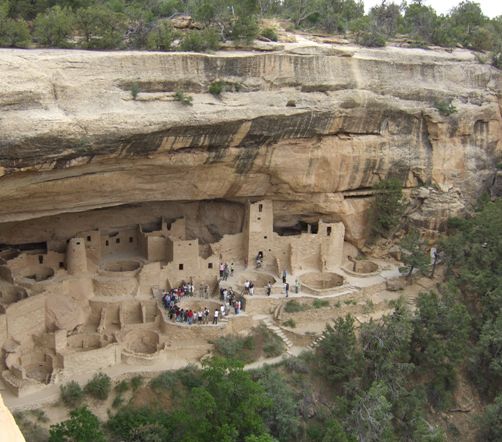 |
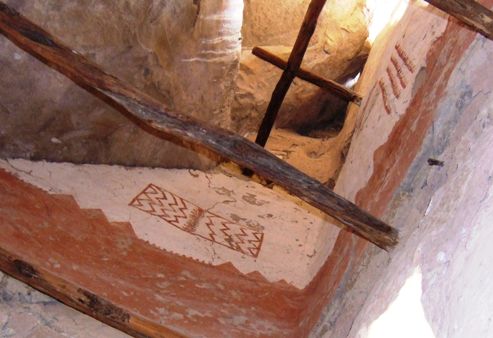 |
The towers were of special significance and thought to be used for
astronomical observations and monitoring the lunar calendar which governed
their lives as agriculturalists. Inside one of the towers are a number of
ancient paintings thought to describe a calendar. These are some of the best
preserved examples of this type of drawing in the world. |
| The park rangers guide
tours of about 50 people at a time taking just over an hour. Our guide was
excellent although the amount which is known about these people at this time
is severely limited. They started this building about 1200AD and had left by
1280AD. Their ancestors live on about 200 miles to the south but are now
spread over 200 tribes of which the Hopi are the best known. The Navajo who
now inhabit this area are not farmers and are a completely separate group. | 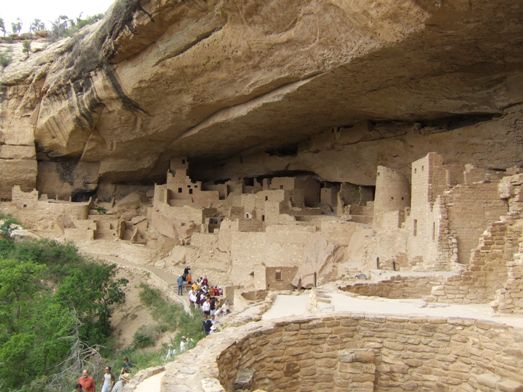 |
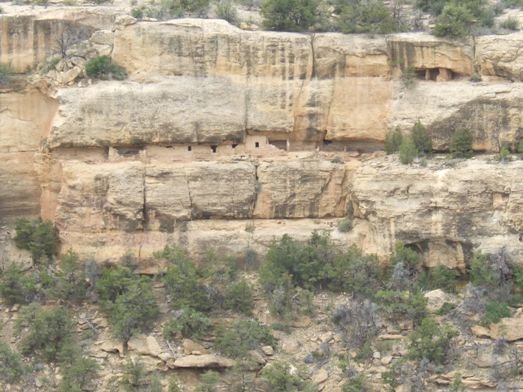 |
Driving on from Cliff Palace we passed the House of Many Windows which is
the name of another settlement on the other side of the valley. This is not
open to visitors - you can only visit about half a dozen of the 600-700
sites in the area as they are quite fragile, and also considered sacred. |
| The next visit was to
Balcony House. Access is not easy with steep cliff paths down followed by a
32 step wooden ladder to get in. They do stress these tours are only for the
fit, and remind you that you are over 8000ft so the air is noticeably
thinner. | 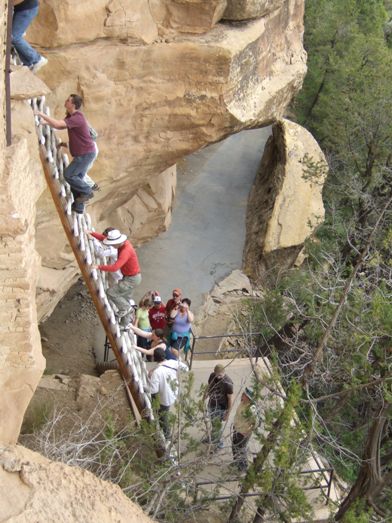 |
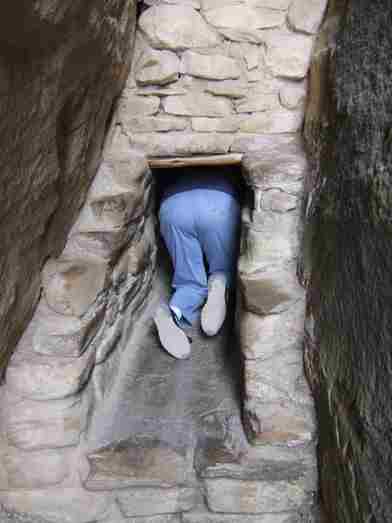 |
You also must not be obese for reasons which become obvious when you try to
leave. The way out (and the only way in for the Puebloans) is via this
narrow tunnel. It is quite short but some people have become stuck. Others
get claustrophobic etc. |
| The stones of the
buildings were mortared with earth, ashes and water which was then
reinforced with small stones in a process called 'chinking'. After discovery
in the 1920s the Park Service tried to preserve some of the ruins by
rebuilding sections with portland cement. This did not prove to be totally
successful as the severe freeze/heat cycles cause the sandstone to come away
from the mortar. The ancients knew a thing or two! | 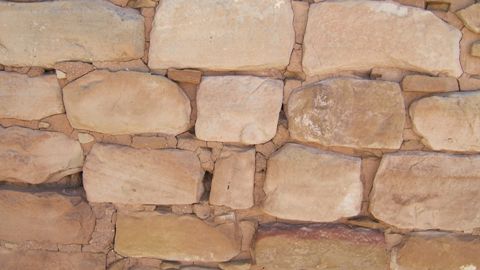 |
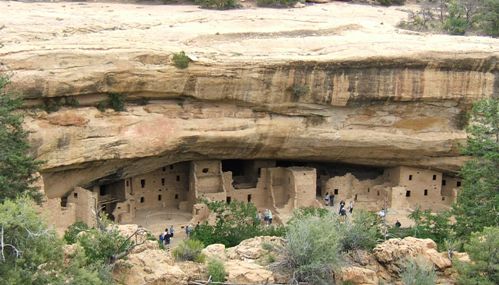 |
Next to the museum is Spruce House. You can tour this settlement without a
guide and access is easy. Park rangers are on hand to answer any questions
and keep an eye on you. |
| Again this is quite a
large settlement going back deep under the overhang. As water drains out
between the sandstone and the shale at the back of the cave it creates a
seep spring which is an almost permanent water supply. They reckon water
takes 40 years to permeate through the sandstone. Around 1240-50AD was a
time of severe drought and they may have left when the water source
eventually dried up. | 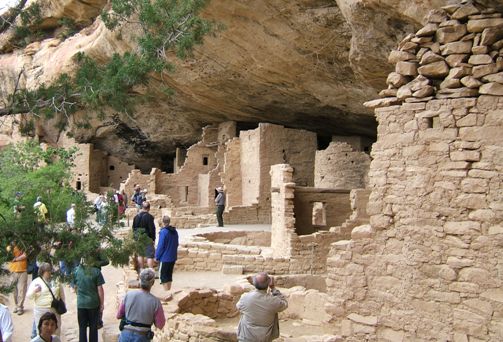 |
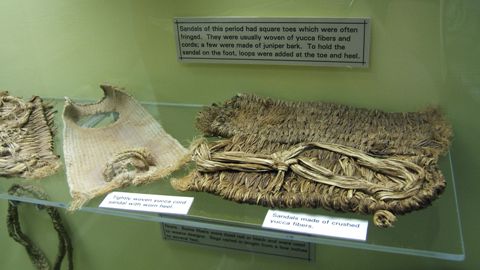 |
The museum is very interesting with all sorts of artefacts which have been
found or reproduced. These are various styles of sandal made of yucca
fibres, which had a multitude of uses for the Puebloans. |
| There are small items of
pottery some of which are quite distinctive in shape, and all decorated with
geometric designs in black and white. Even today the tribes make pottery
which is very different and has great symbolism for them. An animal shape
like this is unusual. | 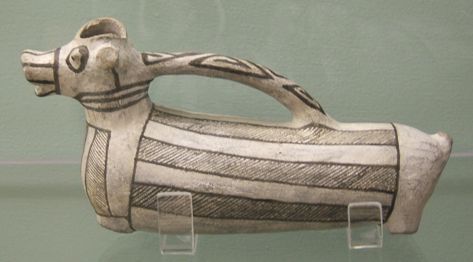 |
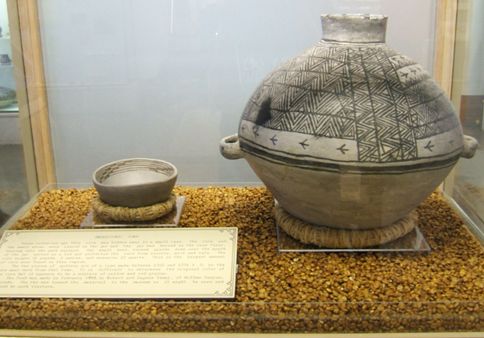 |
This urn was found in a cave with the small dish inverted as a lid. The
notice says that this is the original corn found inside it. It is over 800
years old. |
| There are many small
pieces of jewellery and other designs representing spirits and mythological
figures. Some of the artistry is exquisite. This is not all ancient. Some of
these are the product of the descendent tribes today. | 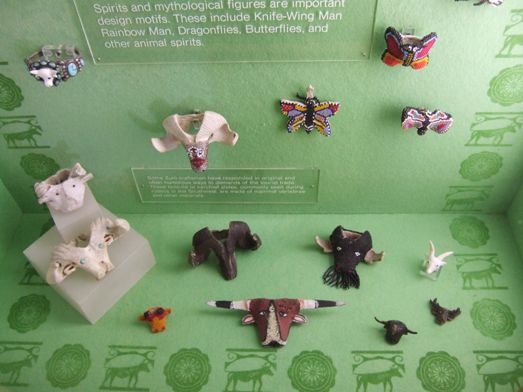 |
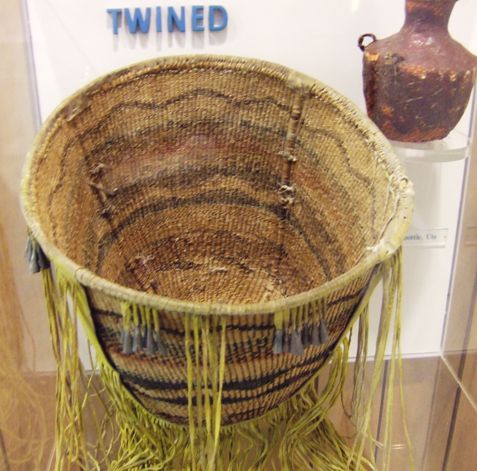 |
Before the pottery came the baskets. The earliest tribes were known as the
basket weavers. Some of the work was so fine that with a lining of pine
pitch they could be used to carry water. As the pottery developed the
quality of the baskets deteriorated, although today these skills have been
revived. |
| There are several
dioramas depicting the villages as they may have been at various periods.
This is before they built the cliff dwellings so will be around 1100AD. | 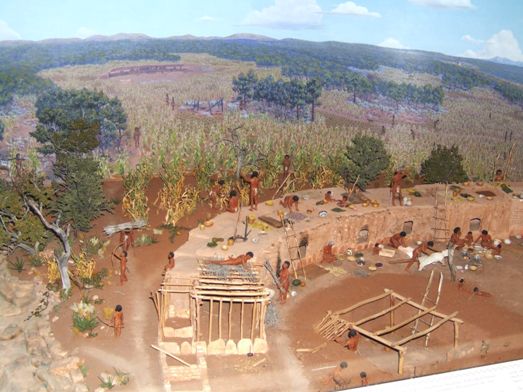 |
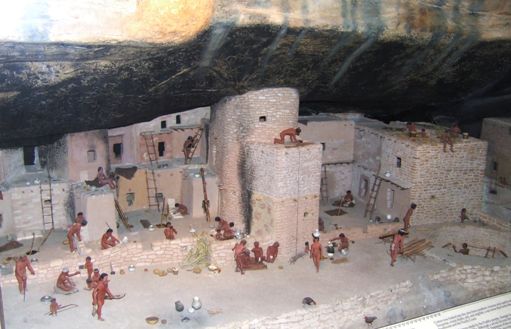 |
It is thought that they were building almost continuously during the cliff
dwelling period which is demonstrated by this diorama probably based around
1250AD. |
| The museum also has a
display of Navajo rugs demonstrating designs from the different periods from
1800 onwards. This is a fairly late period rug when they were starting to
use commercial dyes. | 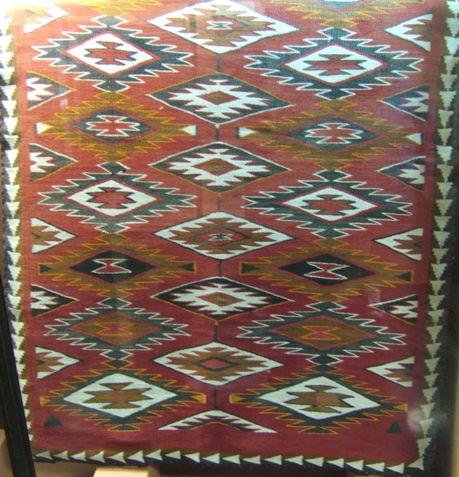 |
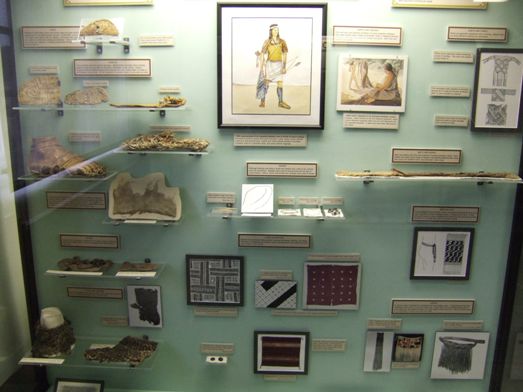 |
Just one of the many displays showing elements of the archaeological finds
and detailing what little is known about their lifestyles. |
| There is an interesting
display on dendrochronology or the science of dating by tree rings. Many of
the cliff dwellings till have original timbers supporting the floors. Core
samples taken from these have been used to date the constructions and were
also the source for information on the climate change which caused the
Puebloans to leave. | 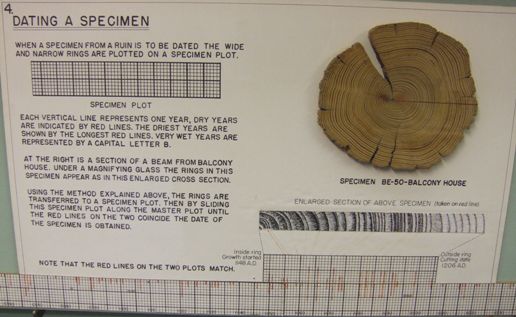 |
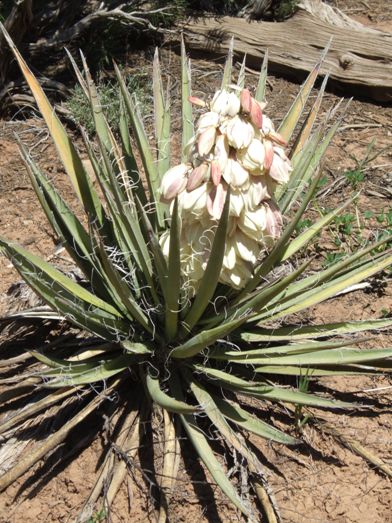 |
Yuccas abound all over the mesa, and almost half seemed to be in flower.
Yucca fibres were used for many things including making rope. The longest
sample found was over 1300ft long. |
| Finally in the gift shop
we found a display of some beautiful wooden vases made from wood burrs
inlaid with turquoise. We didn't enquire as to the cost! | 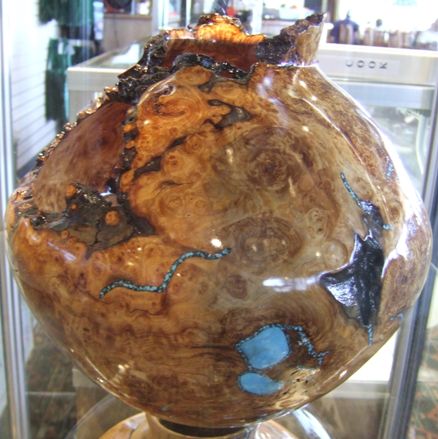 |
|